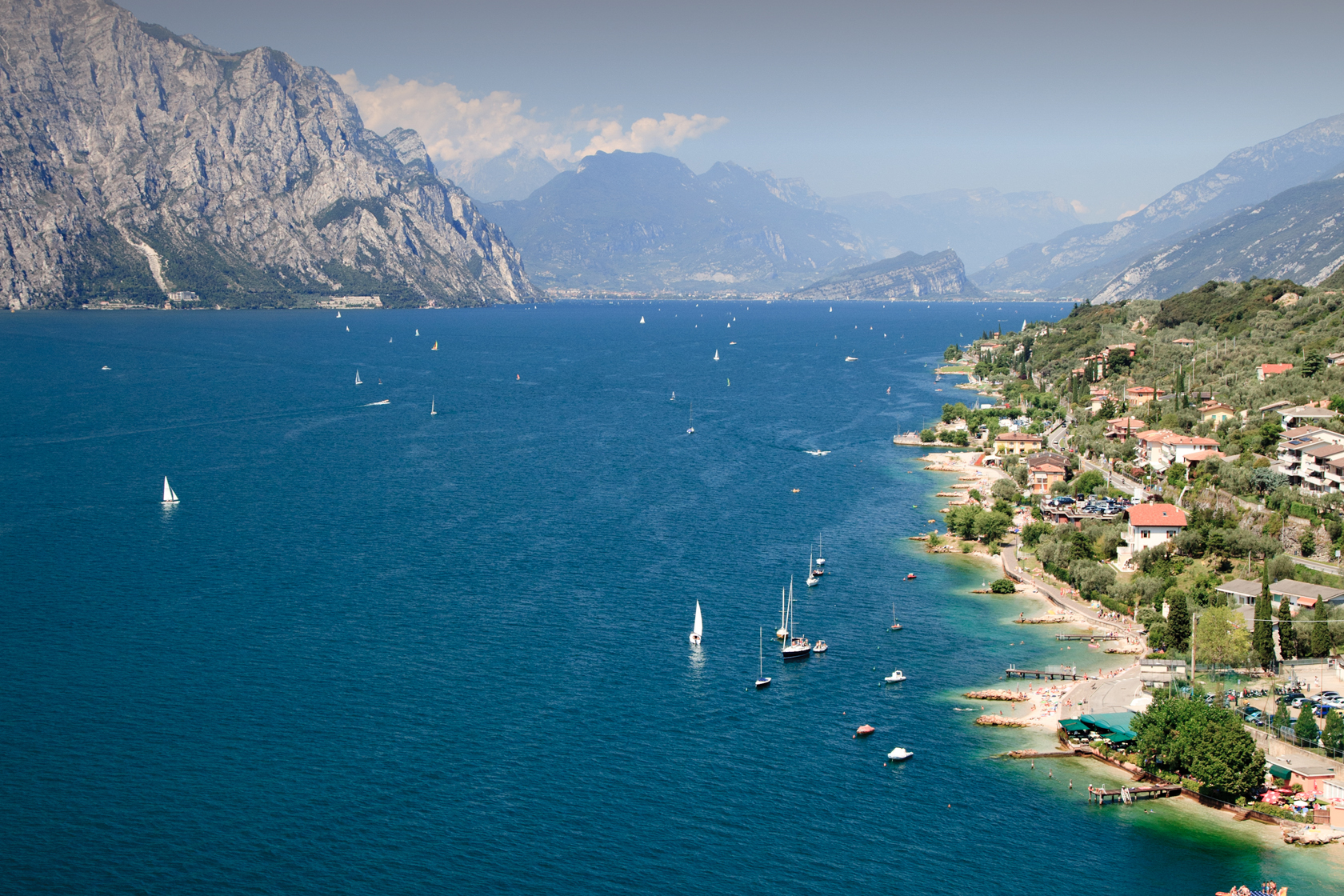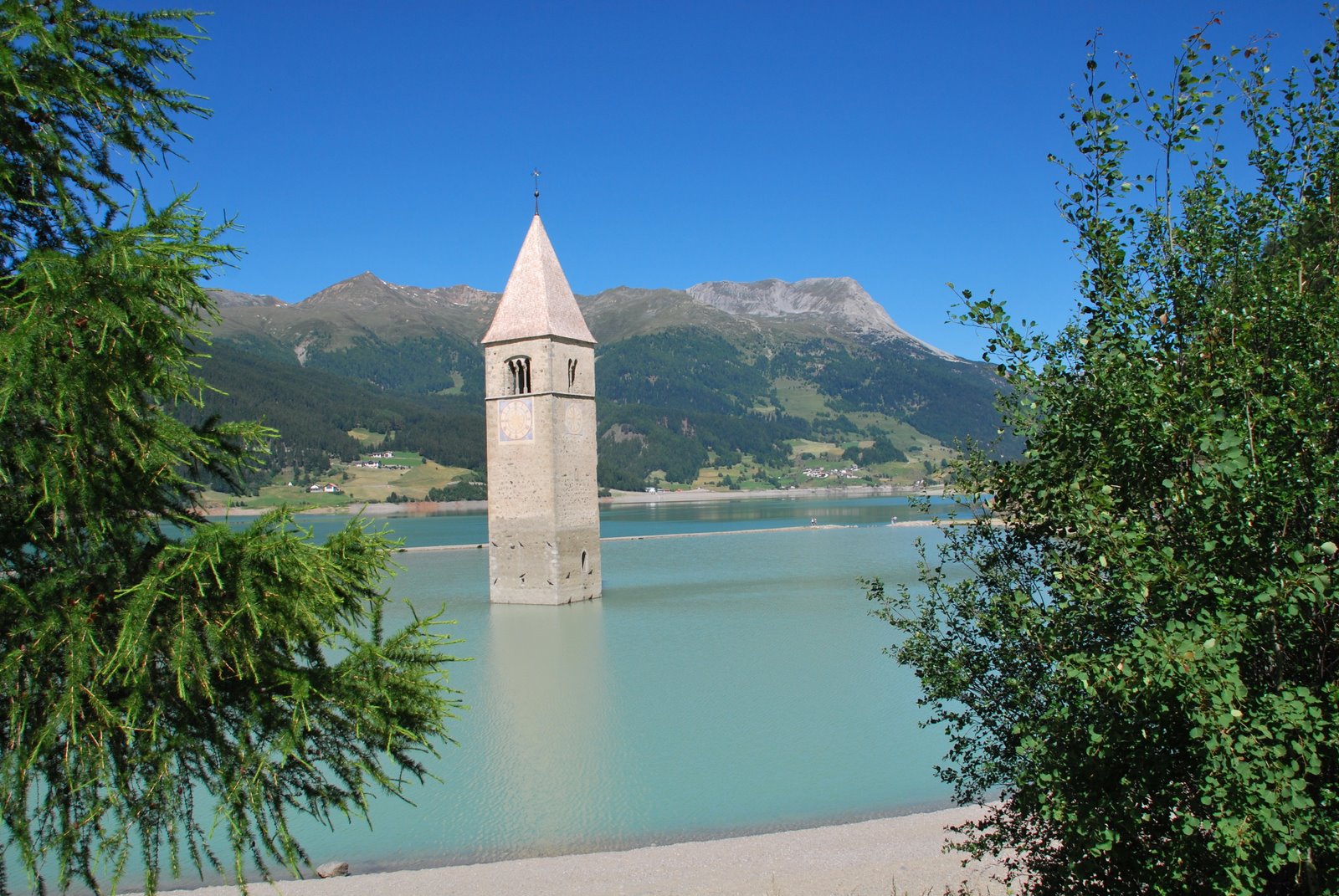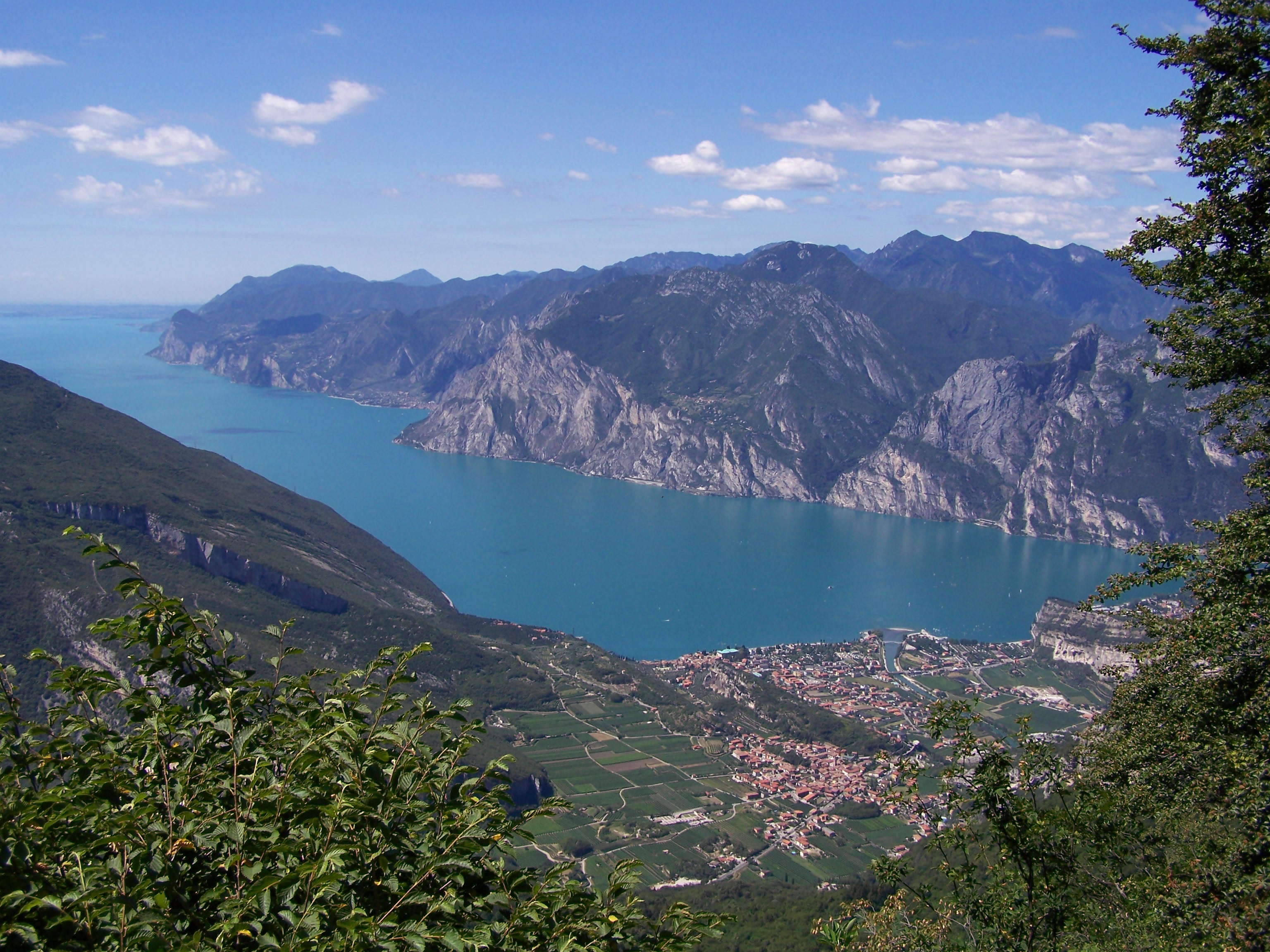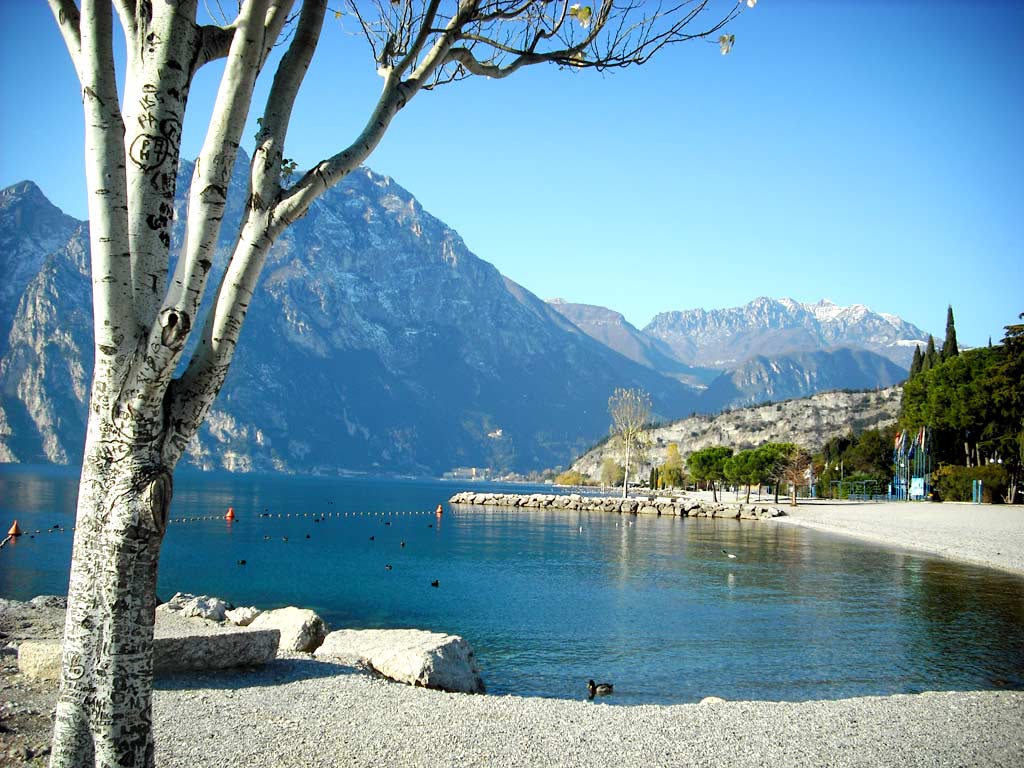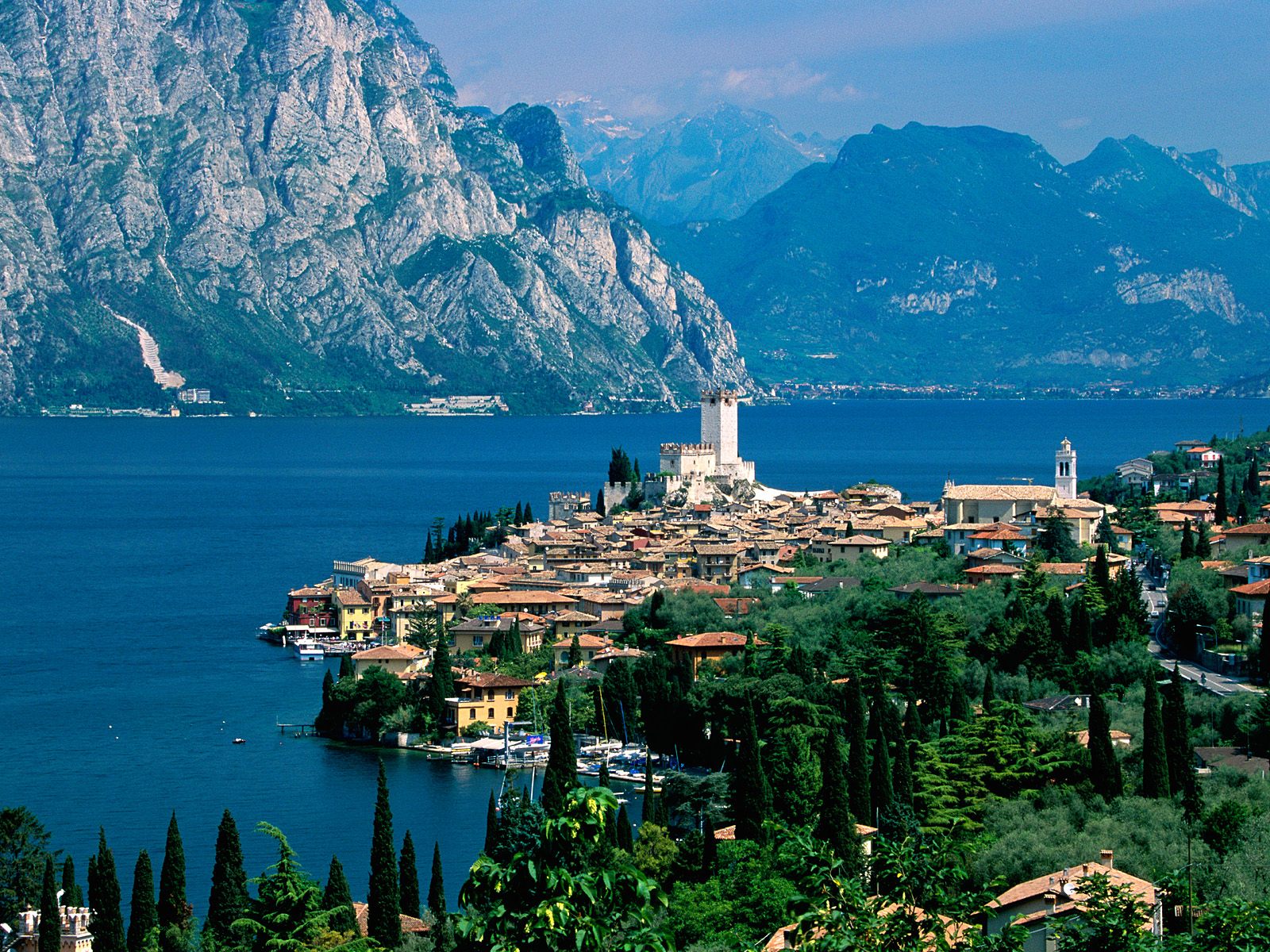
Garda Lake
This post is also available in:
 Italiano (Italian)
Italiano (Italian)
This is one of the biggest Italian lakes, covering some 370 square kilometres within three Regions: Lombardia, Veneto and Trentino-Alto Adige. Its shape varies according to its geographical position: in the north, it appears like a narrow funnel penetrating the Alps, while in the south it widens up, especially in the upper Po Valley.
The lake is home to five rather small islands. The biggest is the island of Garda where, in 1220, Saint Francis of Assisi founded a monastery – today, there’s a XIX century Venetian neo-Gothic building. The second-largest island is San Biagio, also known as “dei Conigli” (“Rabbit island”) because hares and rabbits used to dwell there in the XVI century.
Along the eastern shore, there are three other islands, all of modest size: the island of Olives, the island of the Dream and the island of Trimelone.
The glaciations and the thaws originally contributed to welcome a vegetation similar to the continental European one; after a flood, in the VII century, surrounding forest receded upwards, making room for the lake vegetation featuring cultivated species – chestnut trees (Castanea sativa), the walnut trees (Juglans spp.), olive trees (Olea europaea), vines (Vitis spp.) and cereals – as well as several wild plants.
On the slopes of Mount Baldo, known as “hortus Europae” (“the garden of Europe”) for its variegated floral and indigenous species, several different environments can be found; there’s a hot and humid lower area, for instance, with thermophilic species including mugworts (Artemisia spp.), milkvetch (Astragalus spp.), laurels (Laurus nobilis), oaks (Quercus ilex), yews (Taxus baccata), and turpentine trees (Pistacia terebinthus). Then, between 1.312 and 2.624 ft, there’s a typical wood of hop-hornbeams (Ostrya carpinifolia), ashes (Fraxinus ornus), downy oaks (Quercus pubescens), nettle trees (Celtis australis), common hazels (Corylus avellana), and pear trees(Pyrus spp.). There’s also an area made of maples (Acer spp.), hornbeams (Carpinus spp.), European ashes (Fraxinus excelsior), common hazels (Corylus avellana), and whitebeams (Sorbus spp.).
At a height between 3.280 and 3.937 ft many European beeches (Fagus spp.) can be found, while Norway spruces (Picea abies) and silver firs (Abies alba) can be seen a bit higher.
At 5.577 ft the typical alpine environment appears with many mountain pines (Pinus mugo), hollies, rhododendrons (Rhododendron spp.), and mountain flowers.
The western shore of Lake Garda, also known as “Riviera degli Olivi”, usually features the ideal climate for olive trees, while the eastern part of the lake towards Brescia, is known as “Riviera dei Limoni” due to its copious lemon groves, typical gardens and pebble walls built on terraces.
More than 25 fish species live in the lake, including the famous carpione – a salmonid fish endemic to Lake Garda. Then, there are autochtonous ray-finned fish, eels, common barbels, burbots, chubs, pikes, rudds, three-spined sticklebacks, tenches, Leucos aula varieties, vairones, and lake trouts.
Allochthonous species include common whitefish, common carps, pumpkinseeds, trouts and perches. Seagulls are the most common palmiped species here.
This post is also available in:
 Italiano (Italian)
Italiano (Italian)
Contatti
Gardone Riviera(BS)

